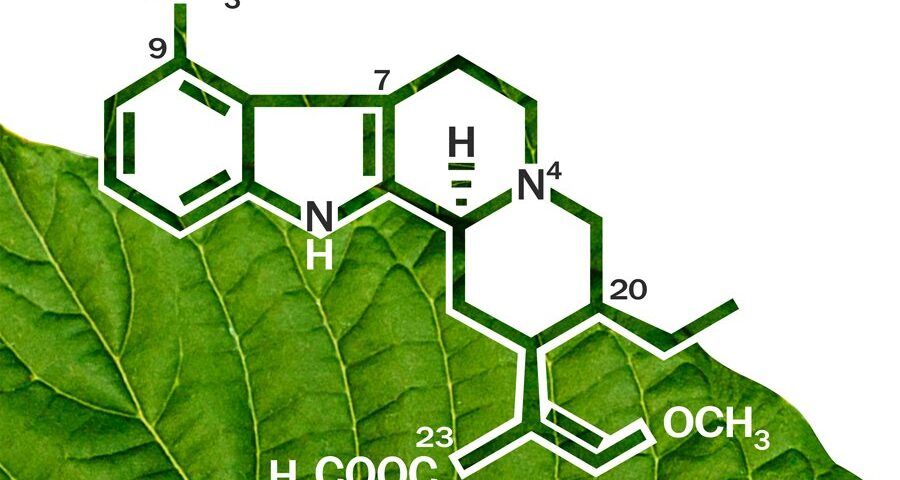
Top 4 Best Kratom Strains for Absolute Beginners
October 9, 2020
Kratom Legality: Is Kratom Legal in Utah in 2023?
December 7, 2020Kratom has a wide range of beneficial properties. However, where do these come from, and what’s responsible for them? The answer is rather simple – kratom alkaloids.
Kratom has a wealth of alkaloids, each of which contributes to the beneficial profile of Mitragyna speciosa.
What Are Alkaloids
Alkaloids are organic chemical compounds that contain one or more nitrogen atoms. Plants, fungi, bacteria, and certain animals, such as ants, can produce alkaloids.
It is not entirely clear why living organisms produce alkaloids. The most popular theory suggests that plants do so to deter animals and pests, using alkaloids as means of protection. Other theories proposed that it was a byproduct of nitrogen metabolism in plants in a similar way to how animals produce urine. Yet, this specific theory has been dismissed.
While the exact purpose of alkaloids in nature isn’t yet known, in the 19th-century, scientists were first able to isolate alkaloids and find applications for them. This was when they determined that alkaloids have a range of beneficial properties, such as anti-inflammatory, anti-fungal, and much more. Some alkaloids are also used in agriculture due to their ability to repel insects.
One popular example of an alkaloid is caffeine, the most prominent alkaloid in coffee, the cousin of kratom.
Main Kratom Alkaloids
While kratom has a minimum of 25 total alkaloids, most of its beneficial properties come from its two primary ones –mitragynine and 7-hydroxymitragynine.
These two alkaloids are responsible for most of the kratom’s properties and determine the unique profile of each kratom strain. Mitragynine is the most abundant and can make up up to 60% or, in some cases, even up to 70% of total kratom alkaloid content.

7-hydroxymitragynine comes in much lower quantities, usually less than 2% of total alkaloid content. Yet it is considerably more potent than mitragynine. Therefore, its amount will determine the qualities of each particular strain.

The amount of both mitragynine and 7-hydroxymitragynine can vary depending on the vein-type and strain. However, the extent to which the amount of 7-hydroxymitragynine can vary is a lot larger than that of mitragynine.
Other Kratom Alkaloids
Mitragynine and 7-hydroxymitragynine aren’t the only kratom alkaloids. They are the most abundant and the most widely studied; however, there are at least 23 other alkaloids in kratom. Some of them are:
- Paynantheine – an indole alkaloid with relaxing properties that is the second most abundant in kratom, making up approximately 8-9% of total alkaloid content.
- Speciogynine – another indole alkaloid with relaxing properties is the third most abundant alkaloid in kratom, accounting for about 6-7% of total alkaloid content.
- Mitraphylline – an alkaloid also present in other varieties of the Mitragyna genus with relaxing and other properties, making up less than 1% of total alkaloid content.
- Isomitraphylline – an alkaloid with immunostimulant properties, making up less than 1% of total alkaloid content.
- Speciophylline – an alkaloid also found in Cat’s Claw, another plant of the Coffee family of plants.
- Rhynchophylline –an alkaloid with anti-inflammatory and other properties, making up less than 1% of kratom alkaloid content and also found in Cat’s Claw.
- Akuammigine – an alkaloid with various different properties also found in akuamma seeds.
- Ciliaphylline – an alkaloid with analgesic properties.
- Isopteropodine – an alkaloid with antimicrobial and immunostimulant properties.
Apart from Mitragynine, 7-hydroxymitragnine and the alkaloids listed above, kratom has other alkaloids. Yet, due to limited studies and knowledge of their, their full potential and scope are yet not fully know.
Other Chemical Compounds in Kratom
In addition to kratom alkaloids, Mitragyna speciosa also contains various flavonoids, polyphenols, terpenoid saponins, and glycosides.
Flavonoids are naturally occurring compounds that are commonly found in tea, wine, and chocolate. Their most prominent quality is antioxidant properties.
Polyphenols are organic chemicals you can commonly find in tea, herbs, and various plants and foods. They have various antioxidant, anti-inflammatory, anti-microbial, and other properties.
Terpenoid saponins are natural chemical compounds in plants that protect them against fungi and microbes.
Glycosides are molecules occurring in plants in which sugar binds to other chemical components.
There is Still Lots We Don’t Know
While mitragynine and 7-hydroxymitragynine get the most attention, we still don’t know much about other kratom alkaloids and other chemical compounds. It is possible that kratom contains a lot more that we still have to discover.
Nonetheless, since interest in kratom is growing, more studies are underway.
The most recent and the largest in its scope is currently being carried out by the University of Florida College of Pharmacy. A team led by Christopher McCurdy, the pioneer of kratom research in the United States, is working on two major studies.
NIDA has awarded Mr. McCurdy and his team two grants. One is worth $3.5 million, and the other additional $3.4 million. As a result, the team has $6.9 million and 7 years to study kratom alkaloids.
Hopefully, these will yield more information on kratom, its alkaloids, and their numerous beneficial properties, helping us better understand the full potential of this Southeast Asian herb and build a more positive reputation around it.






